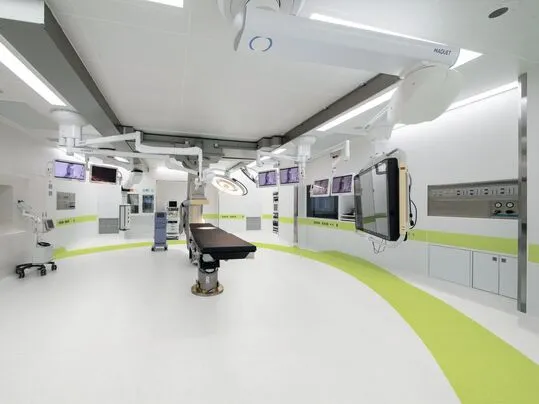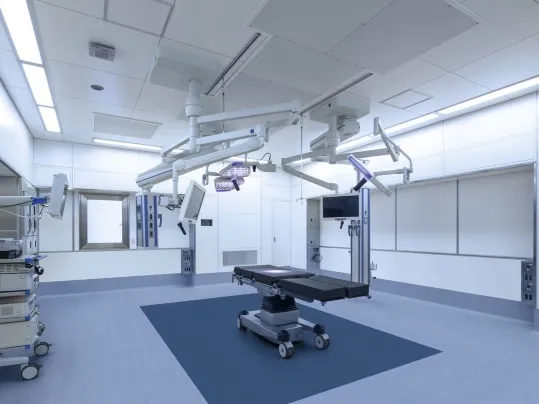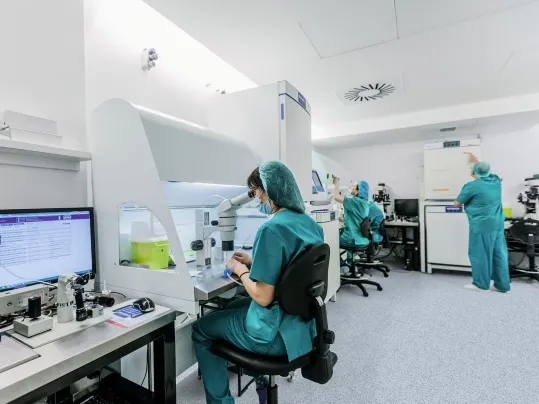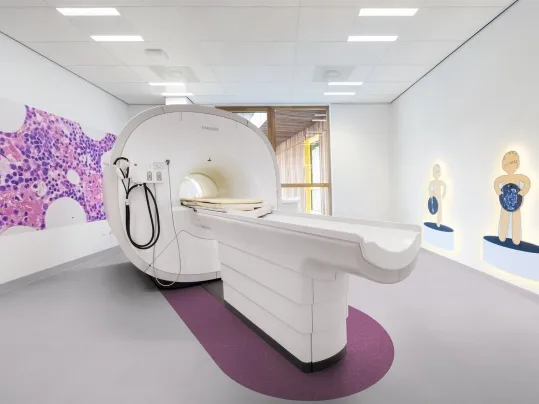Keeping Static Discharges Under Control
March 2021
.png)
There are a range of different environments within a hospital that require protection from electro-static discharges (ESD) for the protection of patients, staff and equipment. But do you know how static discharge can be controlled? Garry Bateman, Head of Technical Sales at Forbo explains all here.
In hospital areas such as operating theatres, intensive care units and imaging diagnostic facilities, the flooring presents its own unique set of challenges. Not only does the choice of floor covering need to comply with strict hygiene standards to prevent the spread of hospital acquired infections, but the generation of electrostatic charges can pose a serious risk to sensitive electronic equipment and devices.
The cause of ESD is the presence of static electricity, which can be generated in a number of ways. It is the build-up of charge (electrical potential difference) between two surfaces caused by the exchange of electrons from one to the other. This is most commonly caused by the contact and separation of two surfaces in an effect known as tribo-electric charging. Different materials will generate static electricity at different rates but one of the most common sources is the friction of people walking across a floor. This is referred to as Body Voltage Generation (BVG).
Electro Static Discharge is triggered when two surfaces with a potential difference come near each other and there is a sudden flow of electrons from one to the other to return to their neutral or uncharged state.


Hospital environments contain many pieces of equipment that can potentially be damaged by ESD. The damage caused is broadly categorised either as a catastrophic failure or latent defect. In a catastrophic failure it is usually an electrical path in a component that has been irrevocably damaged and must be replaced. A latent defect may not result in an immediate failure but can cause a degradation in function and these defects can build up to cause more serious issues.
Static electricity also attracts dust, airborne contaminants and other particles to charged surfaces. Therefore, reducing static in healthcare facilities can make surfaces easier to clean, helping to improve the overall cleanliness of an environment and potentially helping to reduce the spread of bacteria and viruses.
Dangerous and damaging ESD can be prevented by restoring the balance of positive and negative ions in a controlled way. ESD protective equipment encompasses a range of measures to help return the charged surface to a neutral state safely. A key part of the system is the flooring. ESD flooring works by limiting the electrostatic charging of people and materials, while also ensuring that charged materials are discharged and grounded.
There are several types of ESD flooring offering different levels of protection based on the resistance value of the product. The resistance is expressed in Ohms (Ω) and describes how easily electrostatic charges can flow through the floor to earth. If the resistance is low, the floor is more conductive and electrostatic charges will flow very easily to ground. A higher resistance value means the charge will be impeded more in its path to ground.
The three main types of flooring that are described as having anti-static properties are:
• Anti-static – this offers the most basic level of protection and is designed to improve the comfort of building users by reducing the chance of ‘static shocks’. To comply with the EN 14041 standard, the flooring must limit body voltage generation to 2 kilovolts (2000 volts). This type of flooring has a resistance value greater than 109 Ohms.
• Static Dissipative (SD) – this type of flooring has a relatively low resistance value and so will conduct charges away more easily. SD products have a resistance value between 106 and 109 Ohms.
• Electro Conductive (EC) – offers further enhanced conductivity and as such the lowest resistance of the three categories. EC flooring has a resistance value between 104 and 106 Ohms.

Colorex SD Tiles in operating theatre

Sphera EC sheet 450036 in Pharmaceutical Laboratory
ESD flooring has to be either Static Dissipative (SD) or Electro Conductive (EC) and must be tested in line with EN1081 and IEC 6134-4-1. In addition, the standard for ESD flooring in healthcare settings is IEC 6340-6-1. These are the standards that specifiers should look for when choosing ESD flooring.
As SD and EC flooring products have different resistance characteristics, the choice of product depends on the level of electro-sensitivity of the equipment and environment. For example, SD flooring may be required for hospital operating theatres and areas where sensitive scanning and imaging equipment is located.
In other areas, there may be more than one type of flooring that could potentially be used and so a choice has to be made. For example, in a hospital laboratory, standard ‘anti-static’ flooring may be acceptable because there is limited risk to equipment or danger of ignition.
However, SD flooring could also be considered to help ensure a cleaner environment by minimising the attraction of dust and contamination to charged surfaces. Similarly, both types may be acceptable in the computer server rooms on site, but the SD product would offer improved protection for the equipment if other ESD measures are not in place.
Furthermore, using flooring that meets at least the EN 14041 standard throughout the hospital will help ensure greater comfort for patients and staff. A contractor or ESD specialist will be able to provide guidance in determining what type of flooring is best suited to each area of the building. It is also recommended that for any new piece of equipment, the installation guidance is checked to ascertain what level of protection the manufacturer recommends
While controlling ESD is important, the flooring must also complement the rest of the hospital environment and even serve other purposes. SD and EC floor coverings are available in a range of colourways to provide the choice and freedom to create an environment that supports patient care. For example, in addition to neutral colours there is also the option to brighten the space with an eye-catching shade or evoke the look of the natural world with blues and greens. The flooring colour can also be used as a tool for wayfinding or to create distinct areas. For example, Forbo’s Colorex Signal SD product is available in red, yellow and green ‘signal’ colours to help indicate safe or dangerous areas. Also, there is the option to specify flooring with additional phosphorescent glow properties. These materials will continue to glow for hours after exposure to a light source, making it an ideal solution for floor safety signage, and to assist safe movement in the case of a power cut.

To find out more about our Under Control collection of SD and EC products click here
Download the Forbo Controlled Environment Key Terms whitepaper
Download the Forbo ESD Standards and Test Method Whitepaper
Download the Forbo ESD Essentials Whitepaper